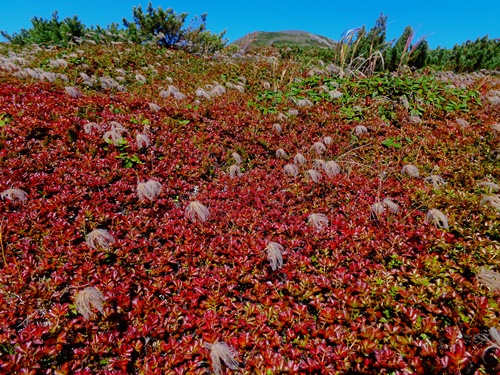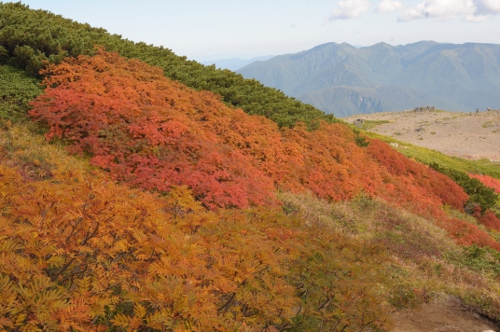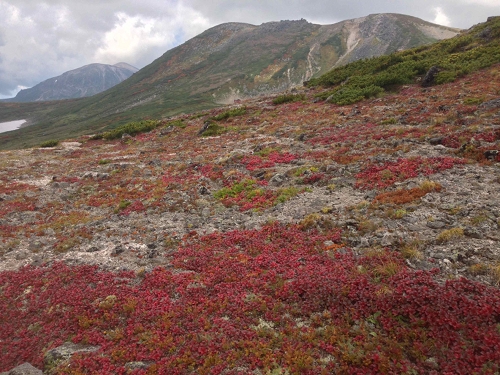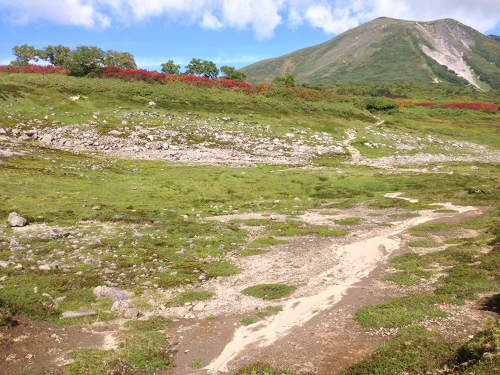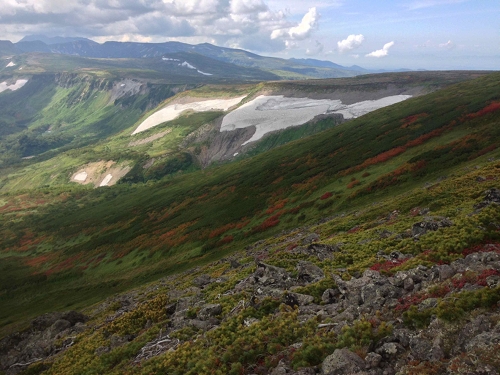Although the area is still largely green, the Sorbus matsumurana have clearly taken on more coloring since the last report of August 25.
Additionally, some limited areas of Sieversia pentapetala and other grasses are beginning to approach their peak viewing season.
Over the past few days, the early morning temperatures at Ishimuro have been 2°C, 0°C, 4°C, and 6°C. Considerable differences between high and low temperatures are beginning to appear, and therefore we can expect coloring to continue.
However, the weather forecast for the coming week predicts continuing clear weather and higher temperatures. If that proves to be the case, it’s possible that the coloring will slow down (although the temperature is not the only factor that determines the beauty of the fall foliage).
As I sensed, the leaves at Mt. Kurodake appear to be turning earlier than usual as of today. The pace seems to be about one week earlier than last year and about 10 days earlier than the average year.
*For mountain information, see: http://sounkyovc.net/trails/kuro/140829kuro.pdf
Photos: Near Kumonotaira Aug. 29

